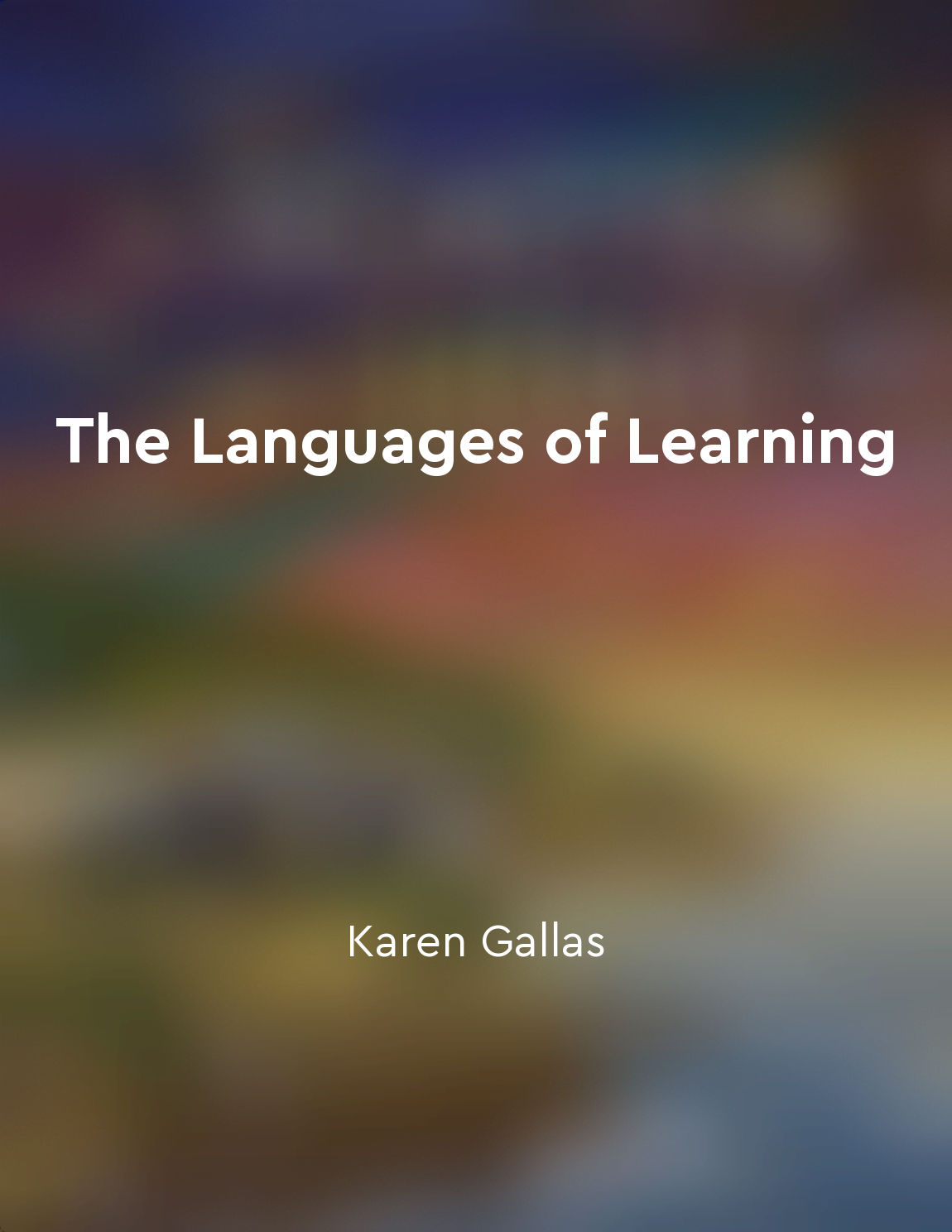Children have their own unique languages of learning from "summary" of The Languages of Learning by Karen Gallas
Children speak their own languages when it comes to learning. Each child has a unique way of understanding, processing, and internalizing information. This concept is central to our understanding of how children learn and grow. It emphasizes the importance of recognizing and honoring the diverse ways in which children engage with the world around them. By acknowledging that children have their own languages of learning, we can better support their individual needs and strengths. This means moving away from a one-size-fits-all approach to education and instead embracing the richness and diversity of children's learning styles. It requires us to listen attentively to children, observe their behaviors and interactions, and engage with them in meaningful ways. Children's languages of learning are not limited to verbal communication. They encompass a wide range of expressions, including gestures, body language, play, an...Similar Posts
Teaching life skills is as important as teaching core subjects
In our schools, we often prioritize teaching core subjects like math, science, and language arts. While these subjects are undo...
Knowing their love language helps parents communicate love effectively
Understanding the love language of a child is crucial in effectively communicating love to them. Each child has a unique way of...
Emphasize the joy of creation over external validation
As parents, we often find ourselves caught up in the trap of seeking validation from external sources. We measure our success a...

Be patient and understanding with your baby
Patience and understanding are key qualities to cultivate when caring for your baby. It is important to remember that your baby...
Encouraging positive behavior through praise and encouragement is important
In order to promote positive behavior in children, it is crucial to provide them with praise and encouragement. By acknowledgin...
Each child has a primary love language
In the world of children, love is a language that can be spoken in different ways. Just as adults have their own love languages...

Children's languages of learning are powerful tools for teachers
Children's languages of learning serve as powerful tools for teachers in the classroom. By understanding and acknowledging the ...
Children have different love languages
Children, like adults, have different ways of feeling loved and expressing love. This understanding is crucial for parents and ...

Children use language to make sense of their world
Children's use of language is not just about communication, it is also a tool for them to understand and navigate the world aro...
The traditional schooling system can stifle a child's natural love for learning
In schools, we often see children who are curious and eager to learn when they first start their educational journey. They come...
